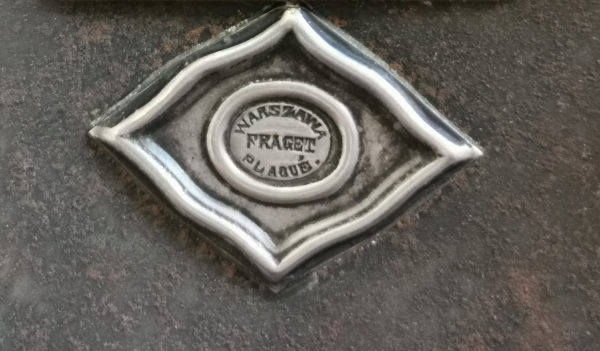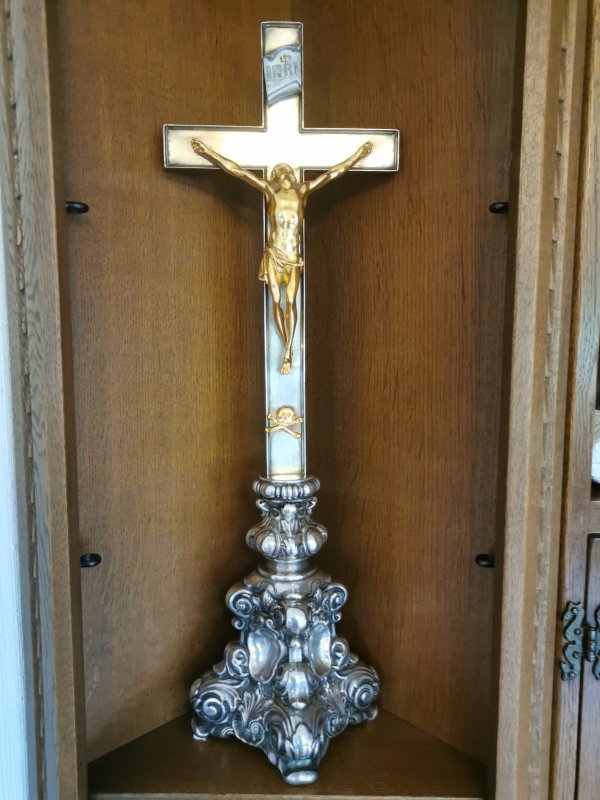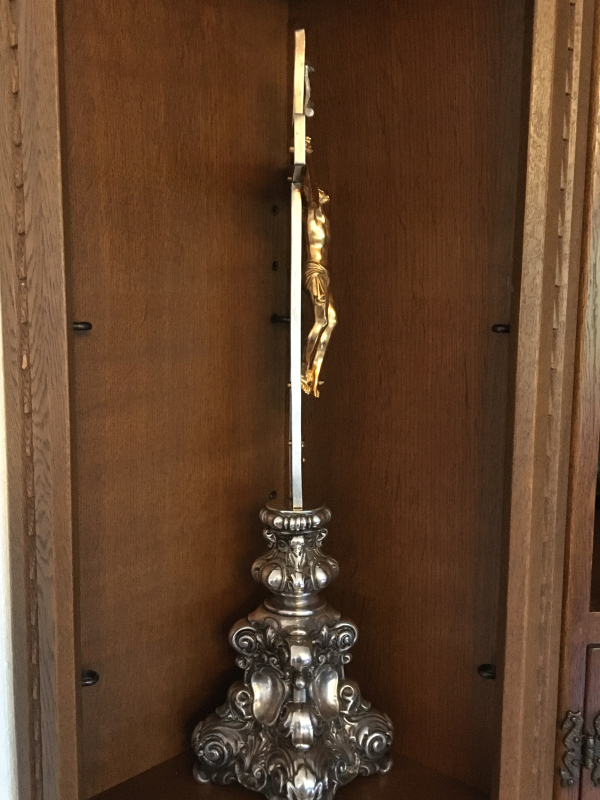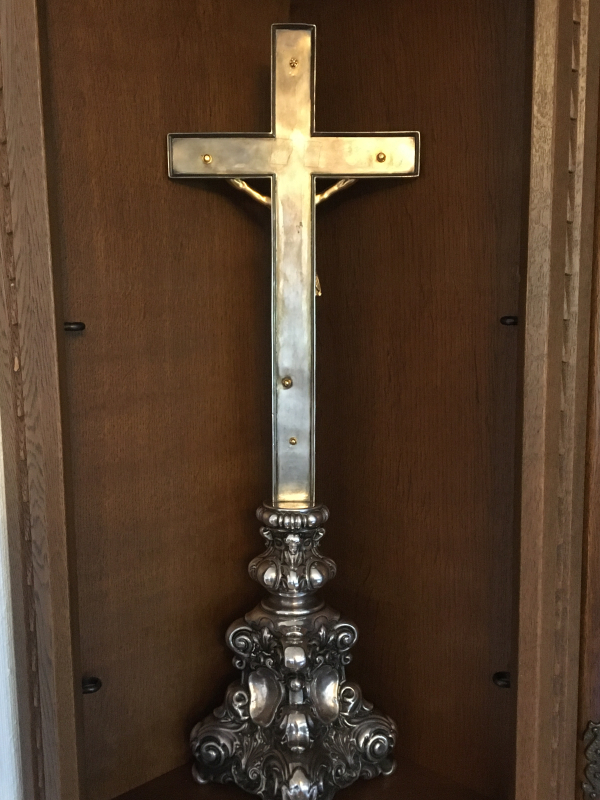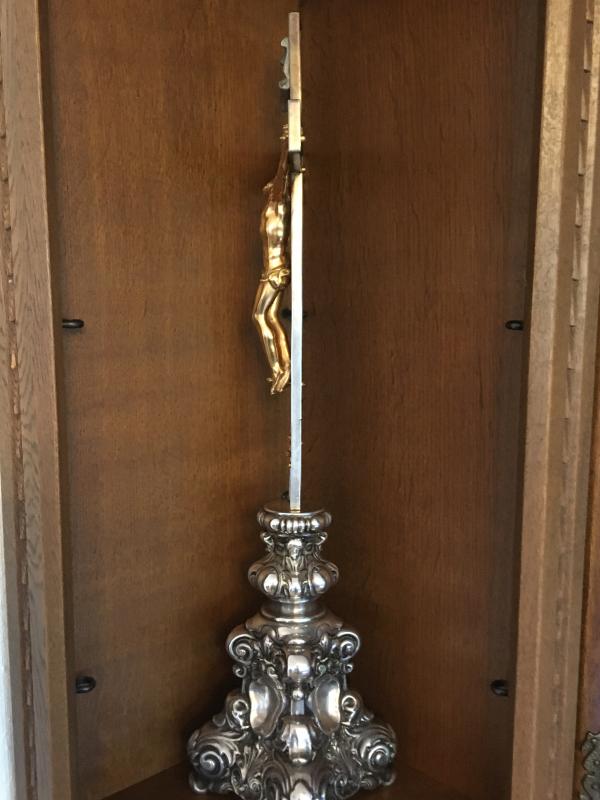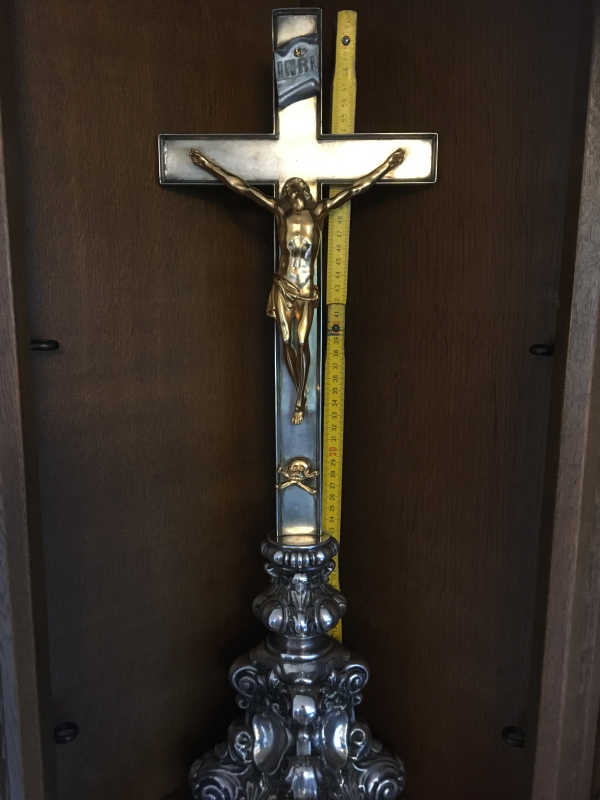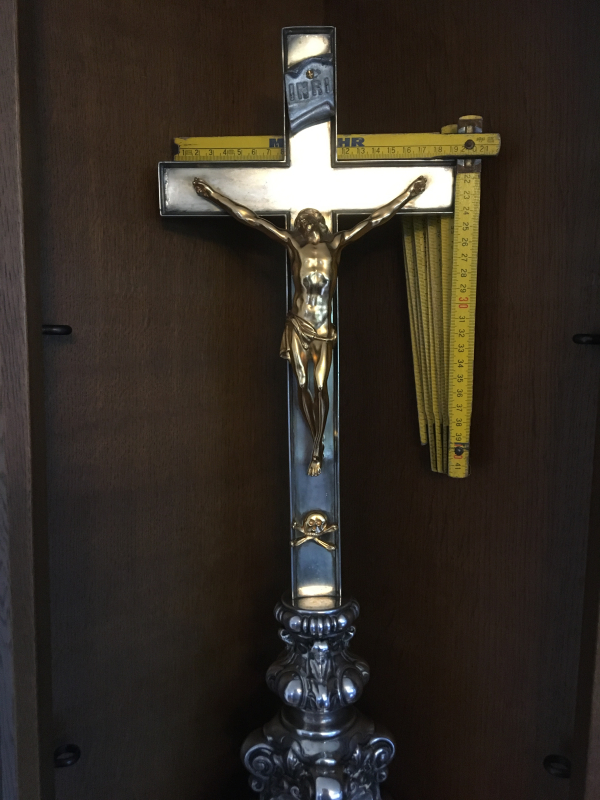_English_
User Tools
Site Tools
Sidebar
Table of Contents
Altarcross from St. Joseph · Krasna
Preface
- My grandma Veronika Riehl got the order from parish priest Prof. Wilhelm Schumacher on September 30, 1940 to save the altar cross from St. Joseph from the Bolsheviks.
- My grandfather Eduard Riehl gave the altar cross at the end of 1953 in a dignified environment to the Parish St. Lubentius, Kobern for safekeeping. This safekeeping was always carried by a timid hope to be able to return to Krasna. This was just not possible.
- The order to bring the altar cross back to Krasna was given to me by my uncle Eduard Riehl and my father Max Riehl. Both are the last living sons of my grandfather. Background of this decision are the following aspects:
- There are not many people left who were born in Krasna. The need to borrow the cross for ceremonies is close to zero.
- My good contact with the current local government of Krasna shows there a historical awareness of this beautiful place on the river Kogälnik.
- In July of this year, the cemetery chapel in Krasna was spruced up, on the initiative of a group of parishioners, on the occasion of the 25th anniversary of the blessing of the chapel.
- The pastor of Kobern, Carsten Scher, wishes us all the best and is pleased that we want to move the altar cross back to its place of origin. For this we have his blessing. (Information from Sigrid Becker on 23.09.2021, sexton in St. Lubentius)
Otto Riehl - September 2021
My grandparents lived in Krasna in this house.
Manufacturer
The cross from St. Joseph, Krasna has a maker's mark of Fraget from Warsaw. The maker's mark was used from about 1851 to 1854.
This Fraget mark also refers to the smelting based silver deposition. It has the Polish inscription “WARSZAWA FRAGET” (“WARSAW FRAGET”) + a French word “PLAQUÉ” in the oval. Note the dot (!) after the word “PLAQUÉ”. Very rare.
Fraget factory was founded in 1824 by two French businessmen - brothers Alphonse (Alfons) and Joseph (in Polish Józef) Fraget. However, after 1841 Joseph Fraget became the sole owner of this company. In the fifties and sixties of the 19th century, the company turned to the production of galvanized silver objects and exported them mainly to the Russian market. The products of the Fraget company soon enjoyed great popularity. Since then, every silver-plated object in the Russian Empire was simply called fraget. In 1867 Joseph Fraget died and his business was inherited by his son Julian. In 1905 Julian was murdered and from 1906 Fraget was run by Julian's daughter Maria Antonina, who died in 1934.
Fachmann Dr. David N. Nikogosyan, Bonn, Deutschland.
The company Fraget was founded in 1824 and later had stores among others in Lviv and in Odessa.
Source: https://pl.wikipedia.org/wiki/Fraget
- Since the company Fraget first founded in 1824, the cross can not be from the first colonists.
- The manufacturer's mark was used in 1851 - 1854. The period I would assume also for the appearance in Krasna.
- I assume the cross comes from the old church.
- The new church was started to be built in 1866. The cross was probably already there.
The design corresponds to the historicism of the 19th century. The stylistic elements, the shape of the acanthus leaves and the overall design language make the cross appear as an object of the Neo-Renaissance, which began to prevail throughout Europe in 1851 with the World's Fair in London.
Silver-plated
Silver plated items are visually indistinguishable from solid silver. Silver plating - called silver overlay - is a galvanized finish applied to a core of base material such as steel, alpaca or bronze. Steel is taken mainly for cutlery from large-scale production, which is cheaper to produce in the core. Bronze is found primarily in chandeliers and hollowware, while alpaca - also called nickel silver - has a tradition in good silver-plated flatware. Alpaca is an alloy of copper (Cu), nickel (Ni) and zinc (Zn) and is similar to silver (Ag) in its properties. Elaborate decorations can be well designed on this core material. The surface is electroplated with silver, the quality of which is given in grams per each 12 table forks and spoons , which are assumed to be 24 dm².
Resettlement
On September 29, 1940 the church of St. Joseph in Krasna ceased to be a church. It was then used as a grain warehouse. In order to prevent the interior of the church from ending up in the junkyard, Father Schumacher distributed all the movable parts to families who were willing to take something. The things were to be taken to the new home for a fresh start and returned there when a new church was started.
Among the things distributed was also the altar cross of St. Joseph. It had no special significance in terms of material value. The divided things had to be packed as private property by the families who had taken something with them.
According to the resettlement agreement, no property of the church or other communities could be taken. At the Danube port of Kilia, the luggage of many families was searched for things belonging to the church. The materially almost worthless cross from the altar of St. Joseph was sorted out during the search as property of the church and was therefore to remain behind in Russia. A heated exchange of words arose between the Russian and German officials over the cross. After a tough, prolonged argument, the Russian official grabbed the cross, cursing, and threw it full force to the ground. Slightly damaged, it was packed by the helpers. The box was taken as the last piece of luggage to the ship, which was already ready for departure.
The cross made the way of resettlement via Saxony back to Poland. There, from where it had once come. After the settlement in Poland almost all churches were closed at that time and there were no opportunities to give the cross to a church.
At the funeral of our mother on 13.03.1942 in Gromaden, West Prussia, the cross with its damage was used for the first time since Krasna at the celebration of the funeral mass and a child baptism. Due to lack of space the cross was packed again and in January 1945 it went on the run with them to Knüppeldamm in Mecklenburg. When the Russians entered Mecklenburg, the Russian soldiers ransacked and looted the remaining belongings already loaded on the wagon for escape and damaged the cross even more. During the 10 years of wandering until 1950 to Kobern-Gondorf, more damage was done.
When it was certain that Kobern would be the new home, our father gave the cross to the church in Kobern circa late summer 1953, with all the damage caused by the resettlement, flight, looting and the many moving trips.
After several years, the cultural circle took over the cost of repair. During the repair, a permanent plaque Eduard Riehl was placed under the foot. With the inscription the origin was documented.
As far as I know, it is the only piece that was saved from the church of St. Joseph of Krasna.
Riehl Maximilian, January 2005
So kann man verbergen
Repatriation
- For the repatriation I, Otto Riehl, want to find a worthy occasion. Thoughts on a date:
- 26.04.2023 - 25 years of consecration of the bell of the cemetery chapel
Unfortunately, the bell was stolen before July 2021.
The new community association bought a new bell in January 2022.
When it is warmer, the bell will be consecrated by the priest from Krasna. - 04.08.2024 - 30 years of laying the foundation stone of the cemetery chapel
- 20.07.2026 - 30 years of consecration of the cemetery chapel
- 29.09.2030 - 90 years after the resettlement
- 29.09.2040 - 100 years after the resettlement
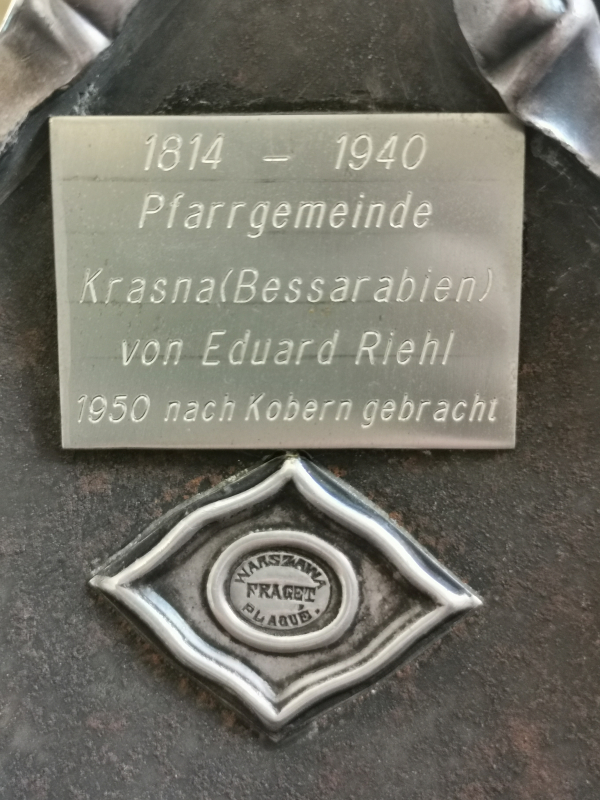
Repair
A repair to the altar cross was carried out in about 1980 by the religious community of the Pallottiner, Vallendar, near Koblenz.
- The cross was badly bent and scratched. This damage was repaired.
- The body of Christ was newly gilded.
- On the underside, a plaque on the origin of the altar cross was glued to the foot.


